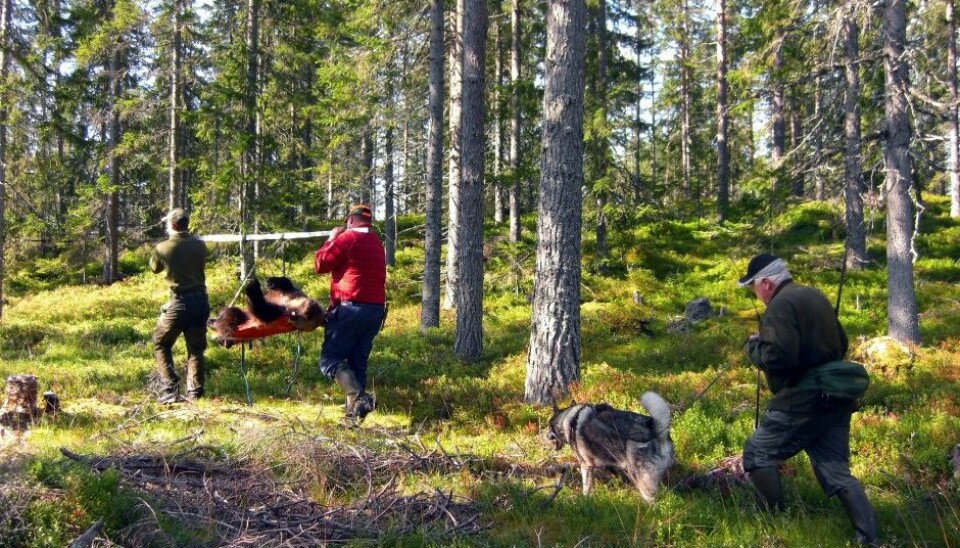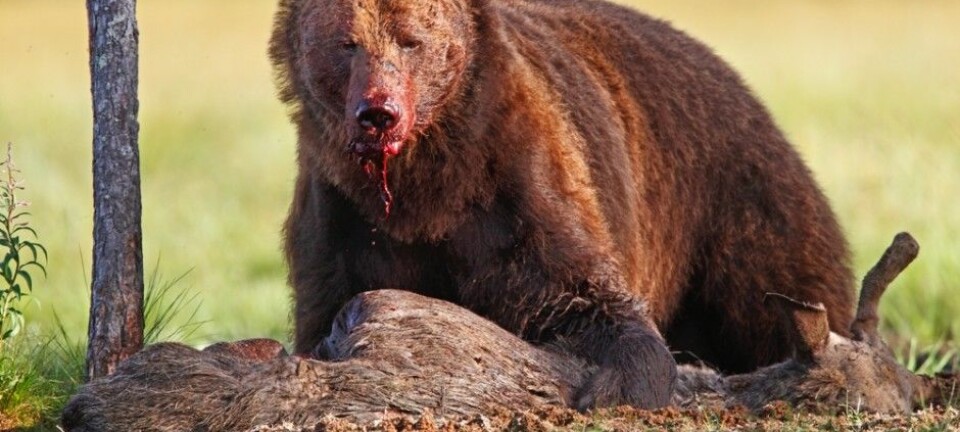An article from Norwegian University of Life Sciences (NMBU)

Bear hunting with caution
With man’s hunting activities, he is now becoming a dominant force in the Scandinavian bear's life, and the consequences are surprisingly complex.
"Our findings show that hunting is one of the most important single factors affecting the lives of bears," says researcher Richard Bischof from the Norwegian University of Life Sciences (NMBU).
New research shows that hunting dramatically alters the dynamics of the Swedish bear population.
300 shot every year
Researchers have monitored Swedish bears since 1985, following over four hundred bears from birth to death. The number of shot bears in Sweden has increased steadily over the past few decades. During the period 2010-2014 around 300 bears were shot every year. The results show that hunting changes the bear's life story.
Dominates the life of bears
“For large mammals, it is common to have high mortality in early life. Animals that make it through these first years and reach adulthood, enjoy a high life expectancy,” Bischof says.
Hunting changes this so that older bears now have greater mortality than before. Hunting also alters other aspects of bear demography. In periods of high hunting pressure, the number of a female’s expected cubs in a lifetime decreases.
"With hunting, humans have become dominant force in the lives of bears, at least in our study population.”
Affects the cubs
Hunting affects not only the animals shot. For cubs, legal hunting is not a direct threat because family groups are protected from hunting. However, bear cubs are affected by the hunt anyway. When large established males are shot, new males take over their territory.
"New males kill the former male's cubs to get the females in heat," he explains.
So, despite being protected by law, hunting is also increasing the cubs’ mortality.
Changes the effects of offspring care
Hunting also changes the balance between mother bear’s care and how often she has cubs. On one hand, females who keep their cubs an additional year, two years instead of one, lower the risk of being shot by hunters. On the other hand, these females will reproduce less often, which reduces their total number of born cubs throughout their lives.
“We might already see an effect of this,” Bischof comments.
“Today, more cubs follow their mother an additional year, as opposed to 15-20 years ago.”
Cautioning management
“The impact of hunting is much more complex than just a reduction in population size,” says Bischof.
He is careful to point out that what the researchers are reporting is not an argument against hunting, but a warning signal to carnivore managers.
“The Swedish bear hunt in the last decades has been sustainable. We can tell this from population numbers, as they first increased and are now stabilized.”
“Hunting, however, has several indirect effects, which means that management must continue to use it as a tool carefully,” he concludes.
This study was partially financed by the Centre for Advanced Study (CAS) in Oslo.
































